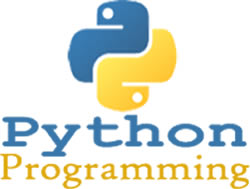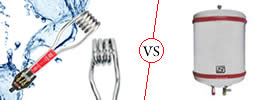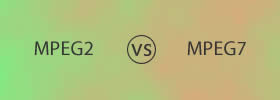Difference between PHP and Python
Key difference: PHP is a server-side scripting language that has its main implementation in web development. However, it can be used as a general-purpose programming language. Python is a programming language. However, it is quite different than C++. Python is a general-purpose, high-level programming language. Python is considered to be cleaner and more direct, with emphasis code readability.
.jpg) PHP is a server-side scripting language that has its main implementation in web development. However, it can be used as a general-purpose programming language. PHP was originally created by Rasmus Lerdorf in 1995 and it is currently managed by The PHP Group. PHP originally stood for Personal Home Page, however it was later renamed. It now stands for PHP: Hypertext Preprocessor, a recursive acronym. PHP is free software released under the PHP License, as is incompatible with the GNU General Public License (GPL) due to restrictions on the usage of the term PHP.
PHP is a server-side scripting language that has its main implementation in web development. However, it can be used as a general-purpose programming language. PHP was originally created by Rasmus Lerdorf in 1995 and it is currently managed by The PHP Group. PHP originally stood for Personal Home Page, however it was later renamed. It now stands for PHP: Hypertext Preprocessor, a recursive acronym. PHP is free software released under the PHP License, as is incompatible with the GNU General Public License (GPL) due to restrictions on the usage of the term PHP.
PHP is an open source, server-side, HTML embedded scripting language. It can basically perform any task that other CGI programs can, but it is mainly used to create dynamic Web pages. Its main advantage is that it is compatible with many types of databases. Furthermore, PHP can talk across networks using IMAP, SNMP, NNTP, POP3, or HTTP.
PHP includes a command-line interface capability and can be used in standalone graphical applications. PHP commands can be embedded directly into an HTML source document rather than calling an external file to process data. In the HTML document, the PHP script is enclosed within special PHP tags. Due to these tags, the programmer can alternate between HTML and PHP instead of having to rely on heavy amounts of code to output HTML. Also, as PHP is executed on the server, the client cannot view the PHP code.
 Python is a programming language. However, it is quite different than C++. Python is a general-purpose, high-level programming language. Python is considered to be cleaner and more direct, with emphasis code readability.
Python is a programming language. However, it is quite different than C++. Python is a general-purpose, high-level programming language. Python is considered to be cleaner and more direct, with emphasis code readability.
An advantage of Python is that its code is quite shorter than most other programming languages. This allows programmers to express concepts is fewer lines of code than in C or C++. Python's language provides constructs. These constructs are intended to enable clear programs on both a small and large scale.
Another advantage of Python is that it multiple programming paradigms, including object-oriented, imperative and functional programming styles. It features a dynamic type system and automatic memory management. It also has a large and comprehensive standard library. All of which helps improve Python’s usability. Also, python interpreters are available for many operating systems.
Python is a dynamic language and like other dynamic languages, it is often used as a scripting language. However, it is also often used in non-scripting contexts. Furthermore, Python code can be packaged into standalone executable programs by using third-party tools.
Some differences between PHP and Python:
- Both are interpreted, high level languages with dynamic typing.
- PHP has a syntax that is similar to C, lots curly braces and dollar signs and "->"-s. Whitespace is ignored. Python doesn't have curly braces, instead the level of indention of blocks of code are important. It has a very clear, concise, and orthogonal syntax.
- PHP has web development features built directly into the core language, whereas Python's web development capabilities are provided by add-on modules.
- PHP has increment and decrement and assignment operators, whereas assignment is a statement only in Python.
- PHP has a confused tableau of function names. Functions are often placed into classes to simulate namespaces.
- PHP has a somewhat weak type system.
- PHP has an expedient environment.
- PHP has one array type that doubles as a list and a dictionary.
- PHP has private, protected and public modifiers for both properties and methods.
- PHP has abstract and final modifiers for both classes and methods.
- PHP has interfaces. Python has multiple inheritance and Abstract Base Classes.
- PHP has variable variables and default arguments in functions.
- PHP can be embedded in HTML.
- PHP has a wide range of available byte-code caches.
- Python has modules.
- Python has rules that help catch more typos.
- Python allows the addition of keyword arguments to functions and methods, as well as easy support for default arguments.
- Python has true object orientation and 'first class' classes and functions.
- In Python, classes are used extensively in the standard library.
- Python has multiple inheritance, object-oriented file handling, excellent introspection, consistent case sensitivity, a simple array slicing syntax, operator overloading, SWIG integration, and threading.
- Python has a "with ... as" statement to deal with resources that need closing reliably and concisely.
- Python has an excellent profiler and lots of high-level data types.
- Python allows for differentiation between arrays (lists) and associative arrays (dictionaries).
- Python has cached byte-code compilation built in, support for all major GUI frameworks, strong internationalization and UNICODE support and is considered to lead to much more scalable applications.
Image Courtesy: itvedant.com, tutorialspoint.com









Comments
paises con mas ...
Sun, 03/25/2018 - 00:51
knock off chain...
Tue, 09/19/2017 - 19:19
foo=foo--
Mon, 03/20/2017 - 12:36
Add new comment